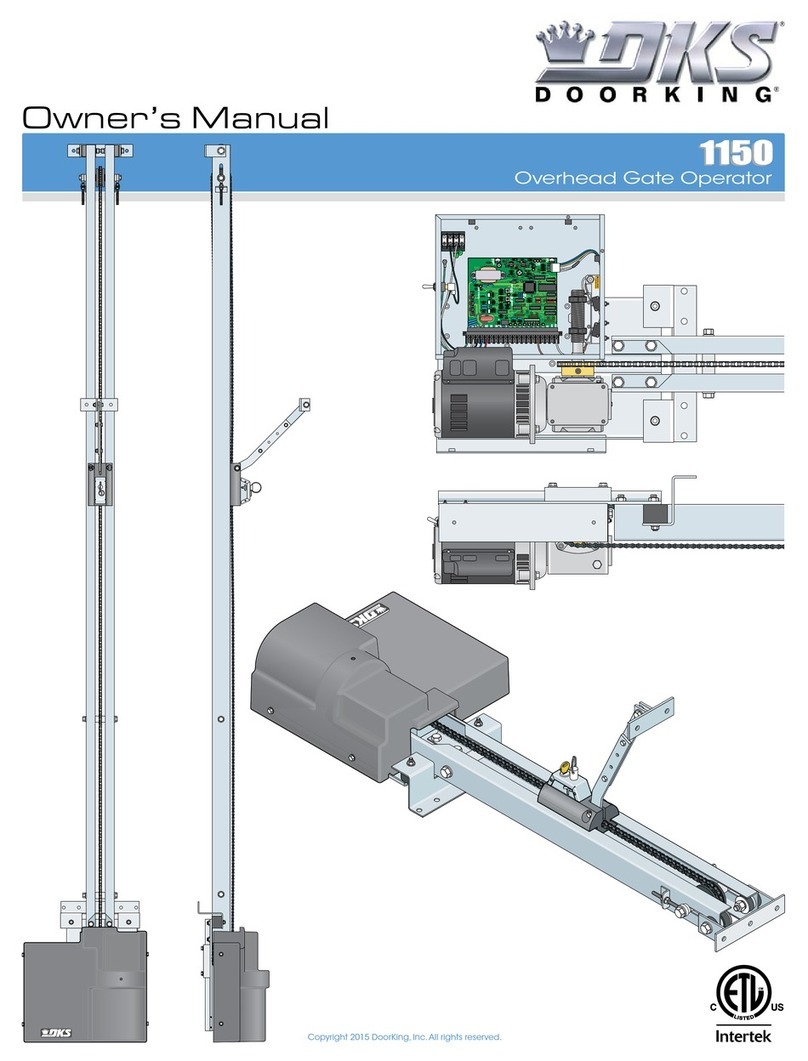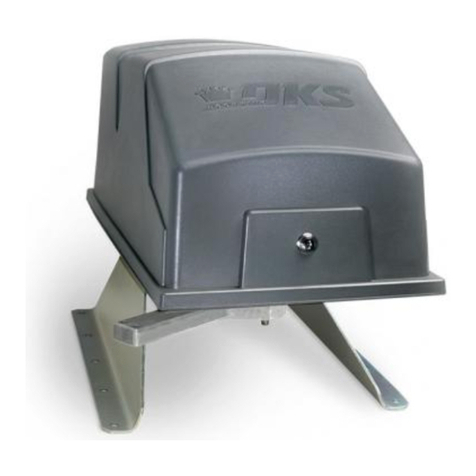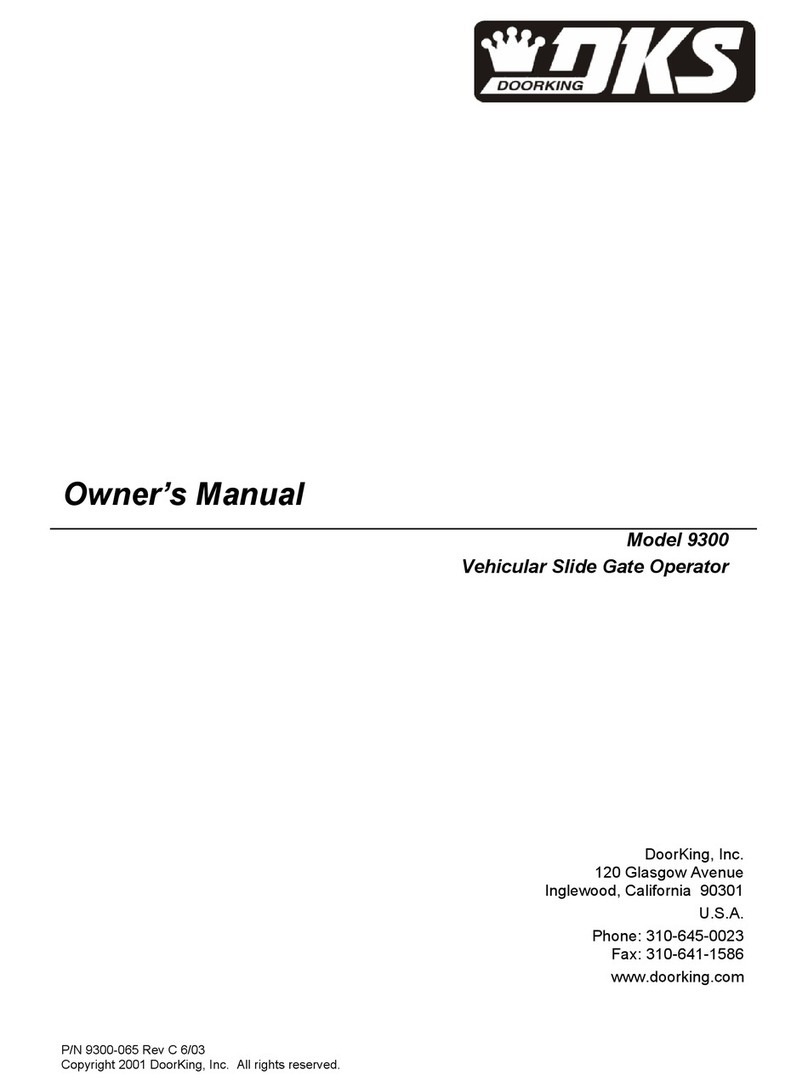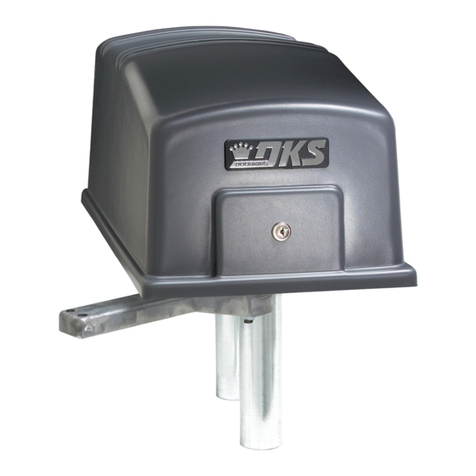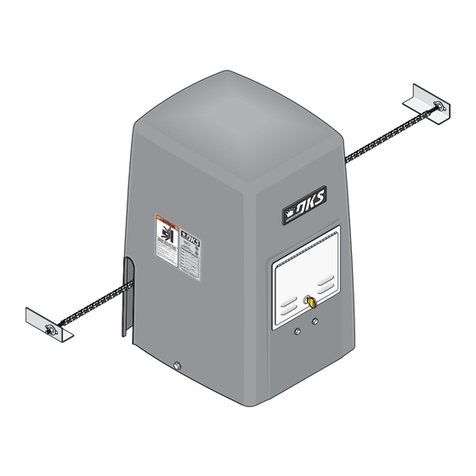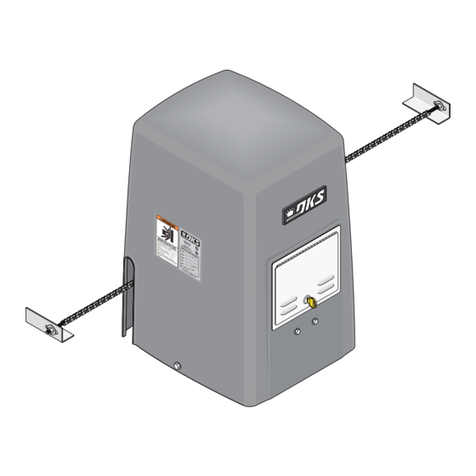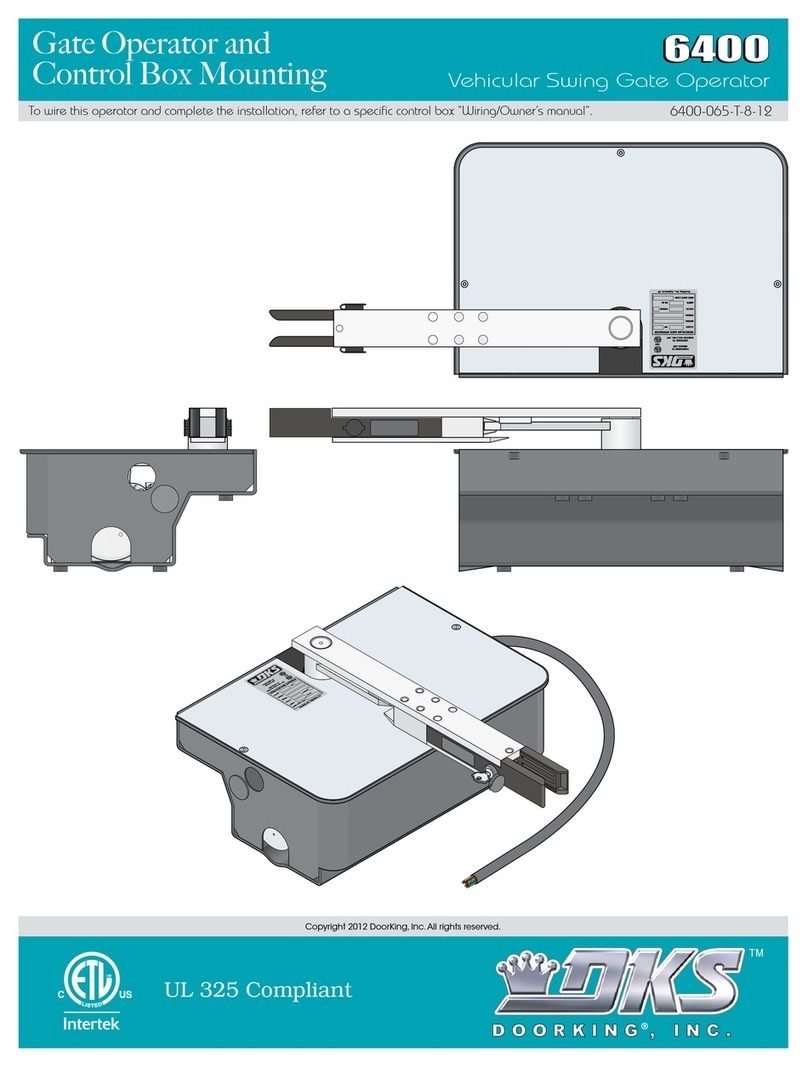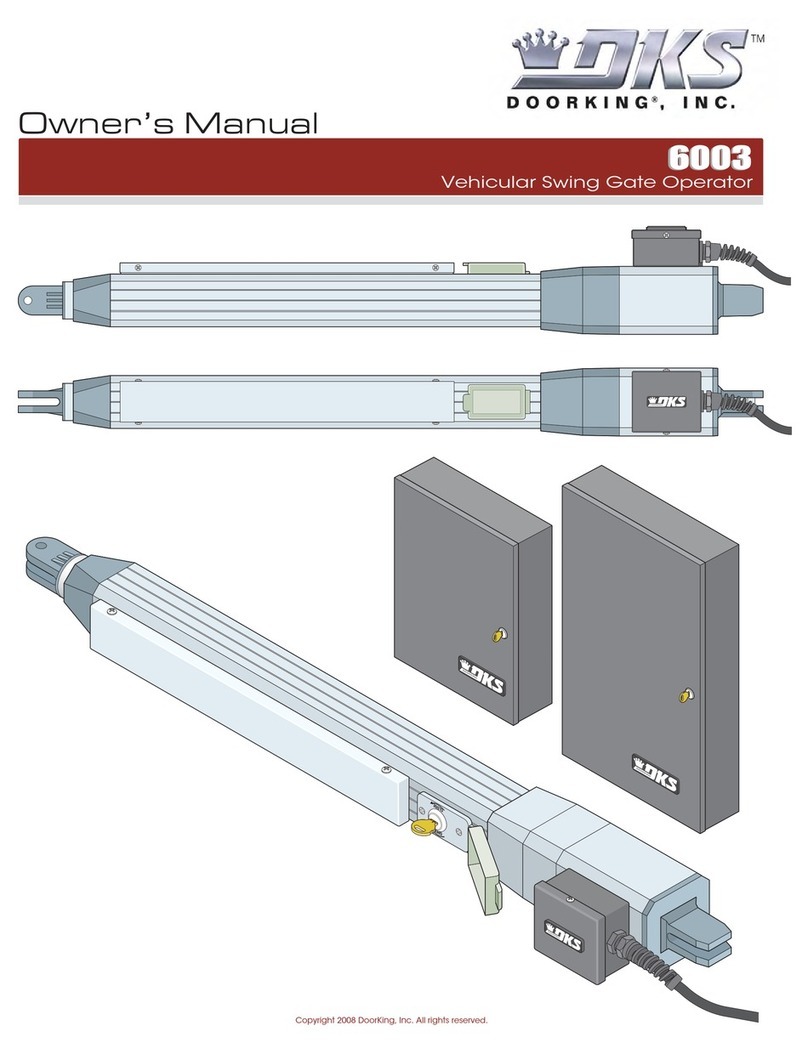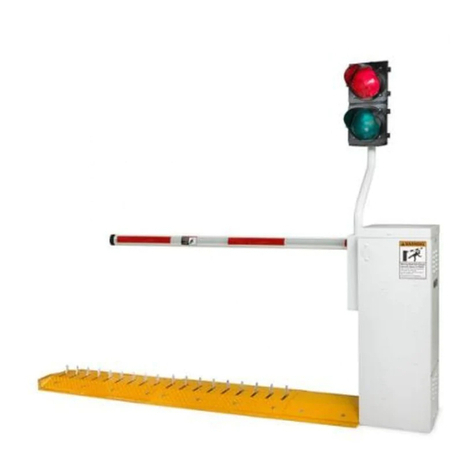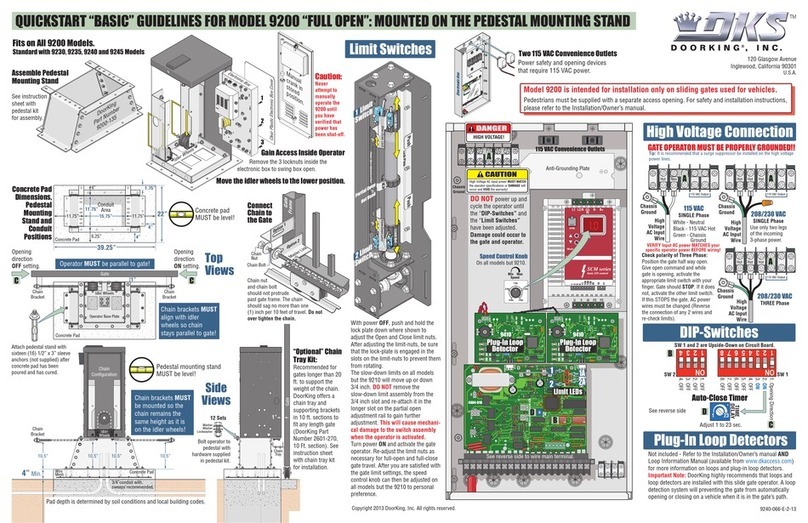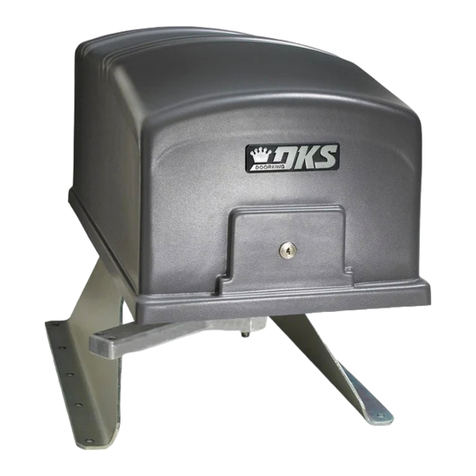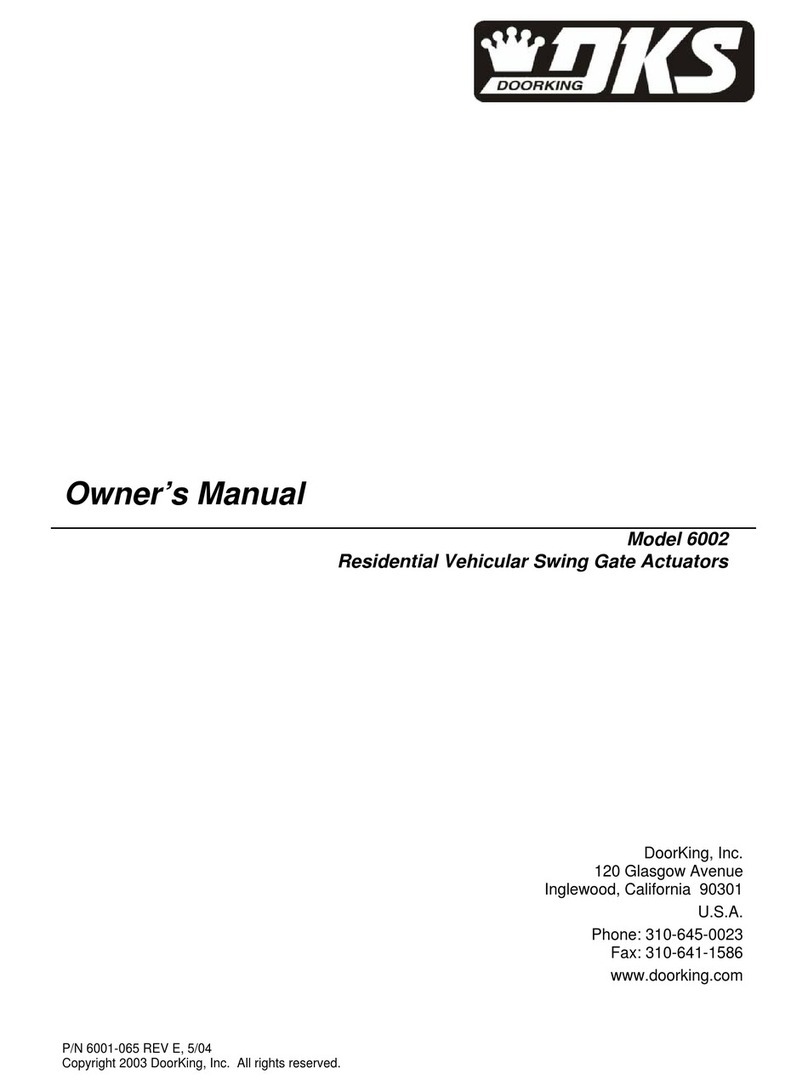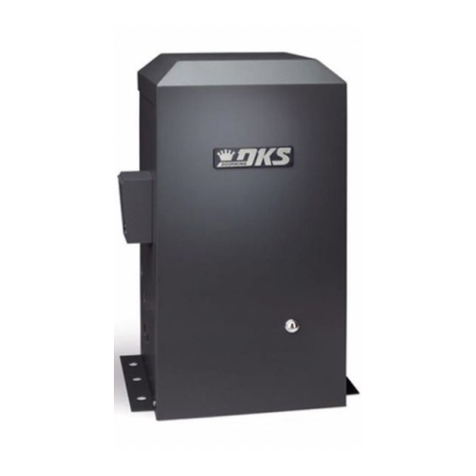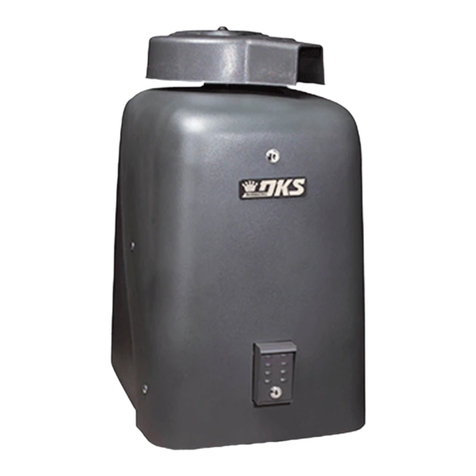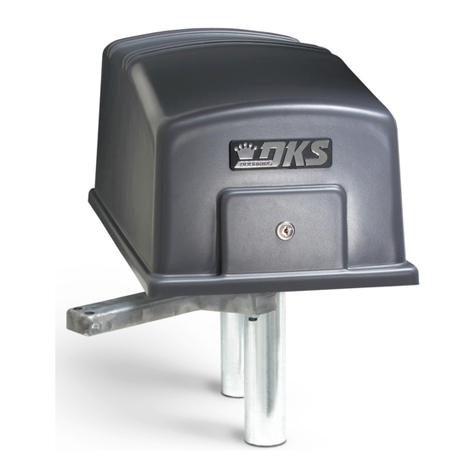
TABLE OF CONTENTS
Important Notices......................................................................................................................................................6
Important Safety Instructions....................................................................................................................................7
Restrictions and Warnings........................................................................................................................................8
Entrapment Prevention.............................................................................................................................................9
Glossary ..................................................................................................................................................................10
Section 1 – Installation
1.1 Specifications ...........................................................................................................................................11
1.2 Mounting Options .....................................................................................................................................12
1.3 Chain Guide Adjustment...........................................................................................................................13
1.4 Pad Mount Installation..............................................................................................................................14
1.5 Mounting Stand Installation......................................................................................................................16
1.6 Chain Installation......................................................................................................................................18
1.7 Warning Sign Installation..........................................................................................................................20
Section 2 – Wiring
Conduits ...................................................................................................................................................21
2.1 High Voltage Connections........................................................................................................................22
2.2 Control Wiring...........................................................................................................................................23
2.3 Secondary Entrapment Protection Device Wiring
2.3.1 Non-Contact Sensors...............................................................................................................24
2.3.2 Contact Sensors.......................................................................................................................25
2.4 Loop Detector Wiring................................................................................................................................26
2.5 Gate Tracker™ Connections....................................................................................................................27
2.6 Auxiliary Devices
2.6.1 Alarm Reset Switch..................................................................................................................28
2.6.2 Auxiliary Stop Switch................................................................................................................28
2.7 Master / Slave Wiring
2.7.1 Operator Interface....................................................................................................................29
2.7.2 Secondary Entrapment Protection Device Wiring....................................................................30
2.8 Terminal Identification and Description
2.8.1 Main Terminals.........................................................................................................................31
2.8.2 Limit Switch Connector.............................................................................................................32
2.8.3 Reversing Device Connector....................................................................................................32
Section 3 – Adjustments
3.1 Circuit Board Adjustments........................................................................................................................33
3.2 Switch Settings.........................................................................................................................................34
3.2.1 SW 1 (Right Switch) Description and Function ........................................................................35
3.2.2 SW 2 (Left Switch) Description and Function...........................................................................35
3.3 Limit Switch Adjustment ...........................................................................................................................36
3.4 Inherent Reverse Adjustment...................................................................................................................37
3.5 Current Sensor Wire Loops......................................................................................................................38
4

